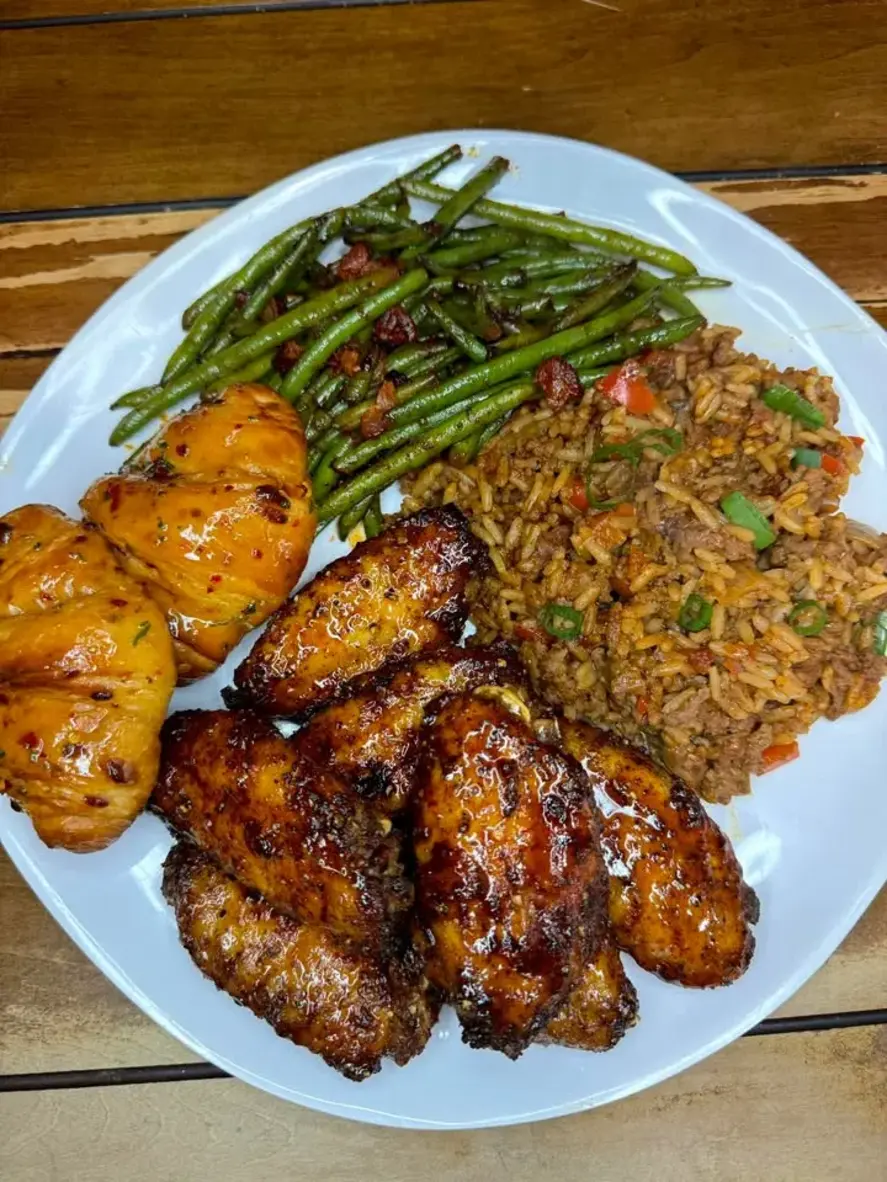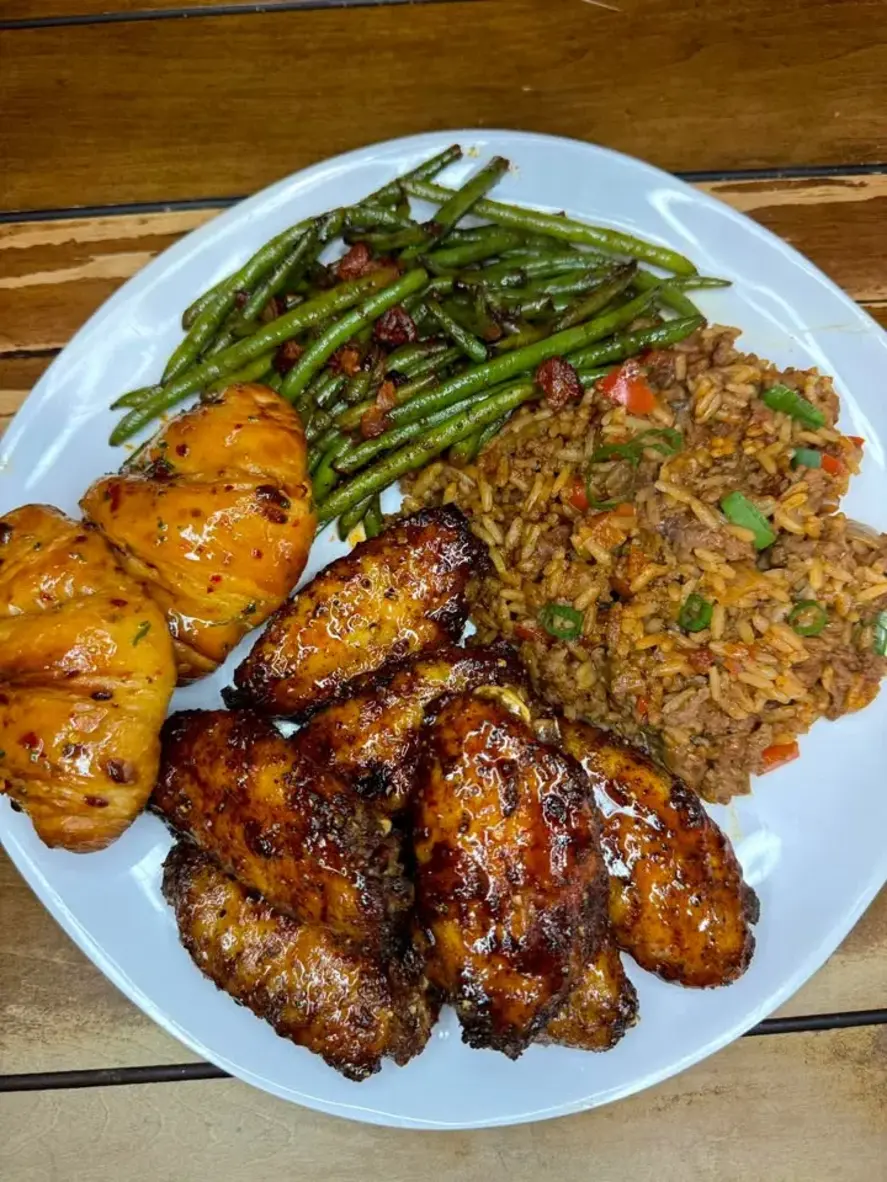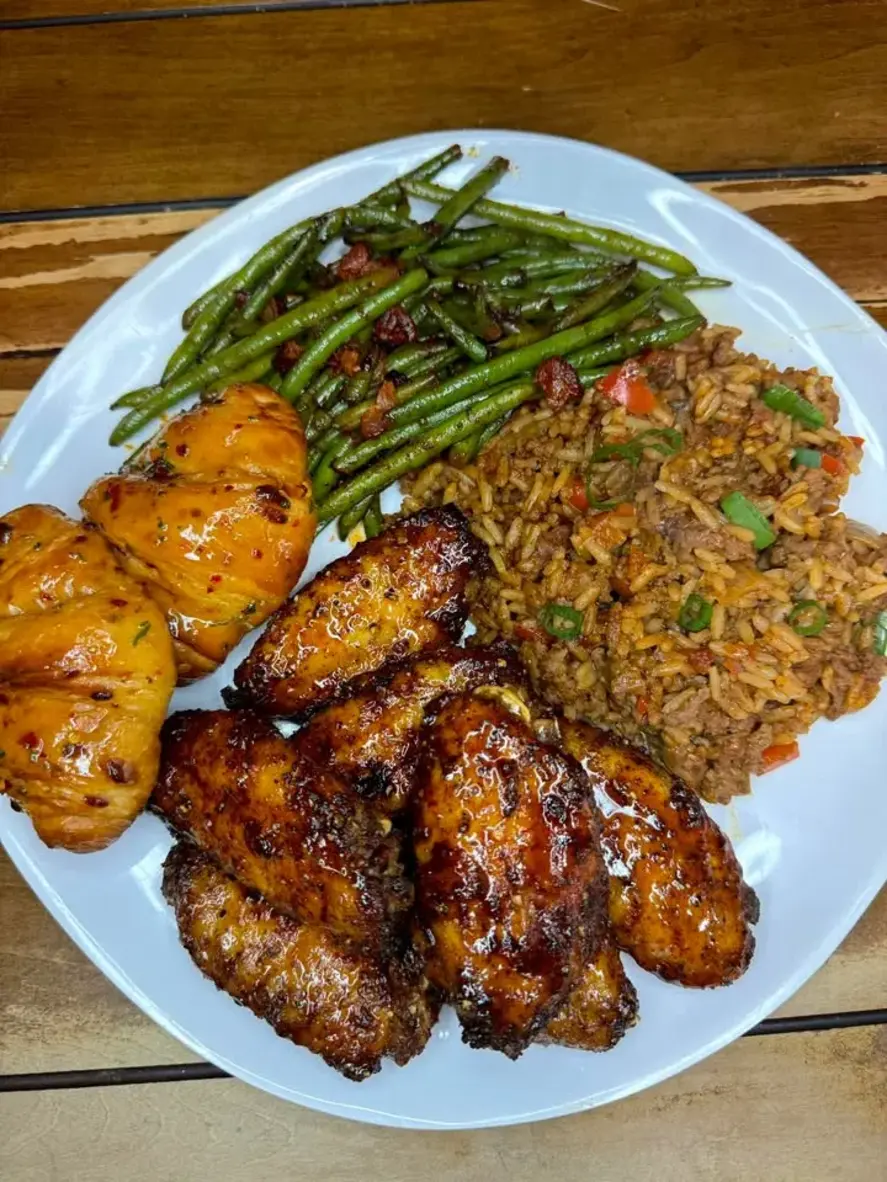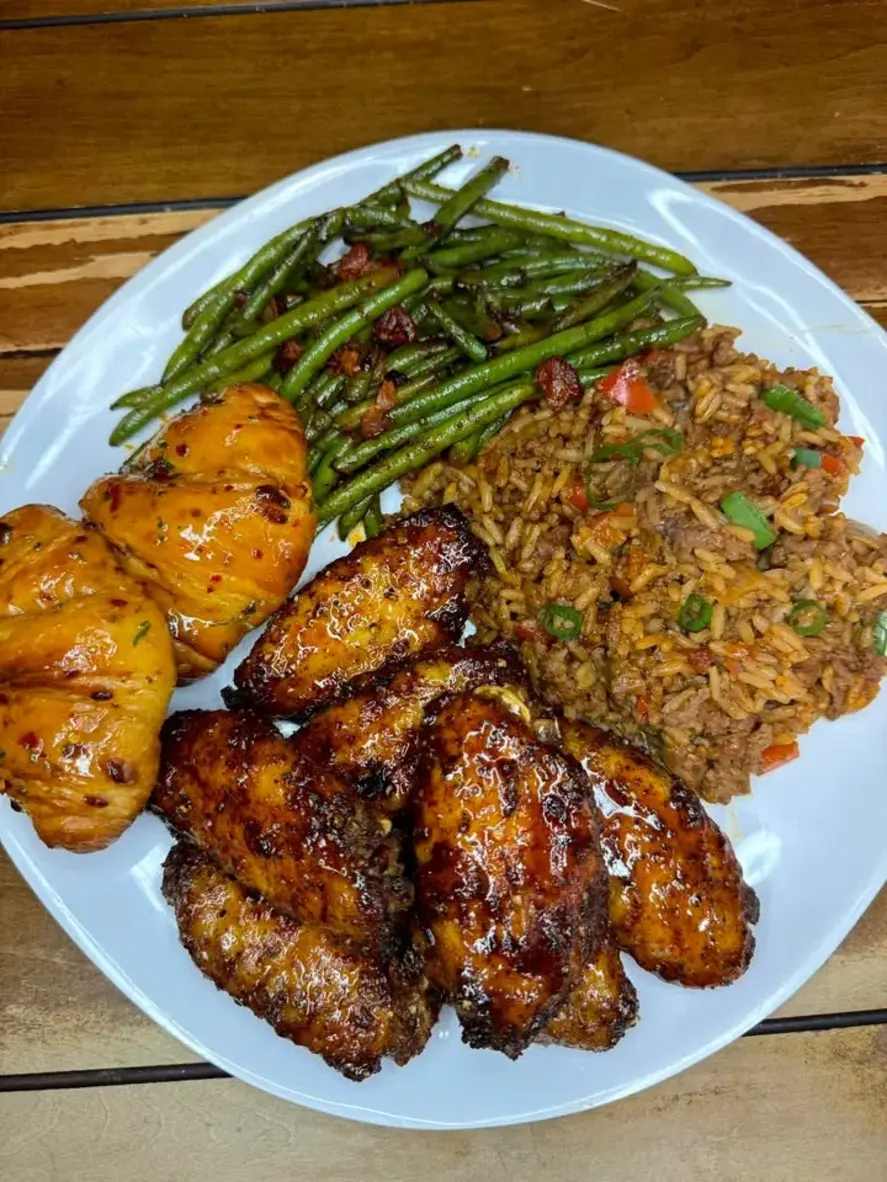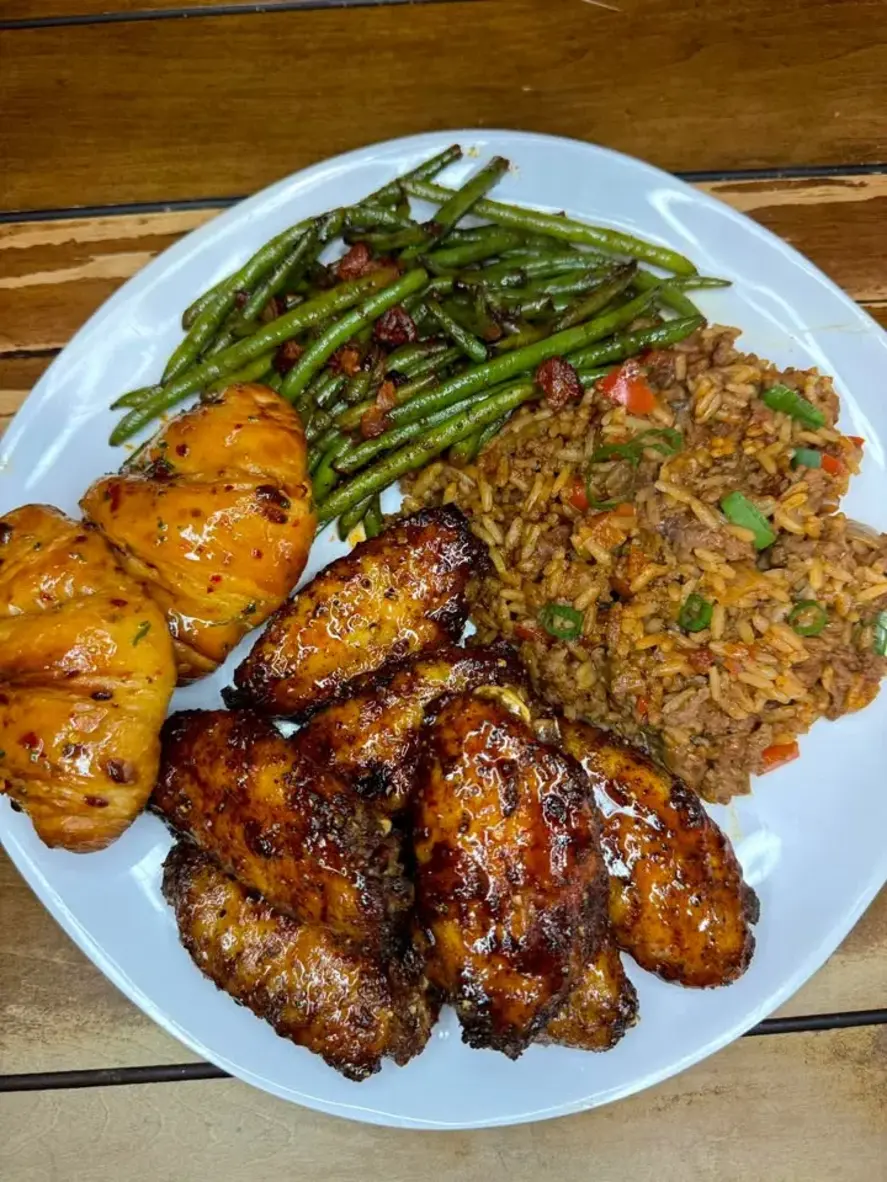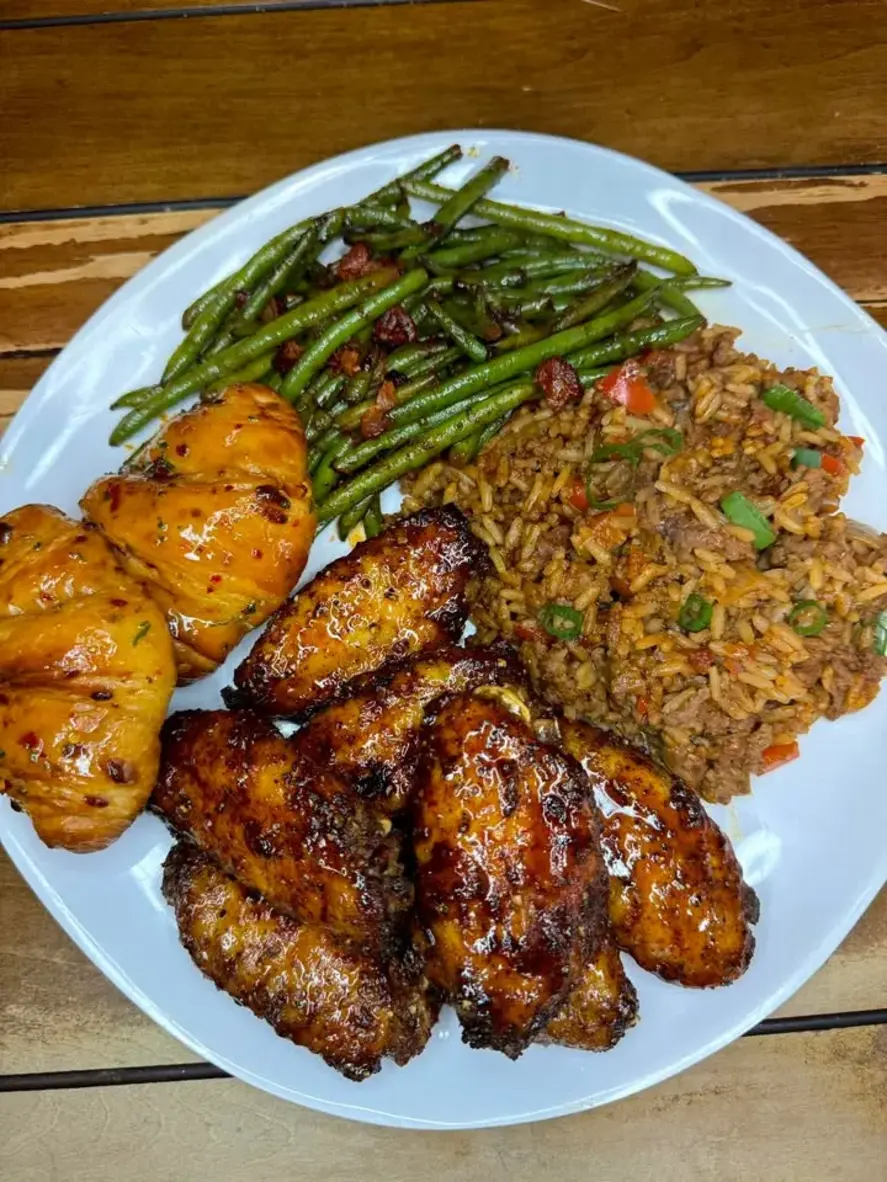Table of Contents
Gumbo Greens with Cabbage for Dinner: The Only Recipe You’ll Ever Need
Imagine a cozy Sunday dinner in the heart of the South, where the aroma of slow-cooked greens fills your home, transporting you to Grandma’s kitchen. If you’re searching for the best gumbo greens with cabbage for dinner, this easy gumbo greens recipe is your ultimate comfort side dish. As a home cook craving authentic southern style greens, I’ve perfected this cabbage greens dinner to deliver smoky, tender bites that melt in your mouth. The secret? Slow-cooking with a ham hock for that unbeatable depth of flavor, making it more than just gumbo greens with cabbage – it’s a flavor bomb of Southern tradition. Whether you’re new to greens or a seasoned pro, this easy gumbo greens recipe ensures tender leaves and cabbage that rival any soul food restaurant. Say goodbye to bland veggies and hello to this hearty cabbage greens dinner that simmers for hours, infusing every forkful with smoky goodness.
The magic of this gumbo greens with cabbage for dinner lies in its sensory symphony: the earthy bite of collard greens mingling with the slight crunch of tender cabbage, all blanketed in a savory broth laced with smoky ham hock. As it simmers, the onions caramelize into a sweet foundation, while garlic adds a pungent kick and red pepper flakes bring a gentle heat that warms from within. The bay leaf whispers of herbs, creating a broth so rich you’d swear it’s velvet on your tongue. By the end, the greens transform – no longer tough, but luxuriously soft, with a subtle peppery zing and a broth that’s pure liquid comfort. Picture the steam rising, carrying notes of meaty depth and vegetable simplicity; it’s a dish that smells like home-cooked love, with each bite revealing layers of texture from silky channels to crisp-tender edges. This isn’t just southern style greens; it’s a slow-cooked masterpiece where flavors meld into something unforgettable, leaving you craving that savory depth long after the meal.
At Cookingwithemy.com, we prioritize recipes that are not only delicious but foolproof, drawing from traditional Southern roots with modern twists for reliability. My name is Emily, and I’ve tested this gumbo greens with cabbage for dinner recipe dozens of times to ensure it’s the single best resource on the internet – clear, detailed, and packed with tips for success. Trust me, you’ll feel confident serving this easy gumbo greens recipe, whether for a weeknight cabbage greens dinner or holiday feasts. Ahead, I’ll reveal the “Chef’s Secret” to elevate it beyond basic gumbo greens: the long simmer that infuses every leaf with ham hock smoky depth, resulting in tender, flavorful greens that outshine any other southern style greens dish. Plus, get pro tips, storage hacks, and answers to burning questions like how to make it vegan. Let’s dive into making this cabbage greens dinner a staple in your kitchen!
Why This Gumbo Greens with Cabbage for Dinner Recipe is a Game-Changer
Discover the gumbo greens with cabbage for dinner that’s set apart by its unique angle: long-simmered infusion with smoky ham hock for maximum tenderness and rich Southern depth. This easy gumbo greens recipe isn’t just another collection of leafy vegetables; it’s a slow-cooked flavor bomb where the ham hock imparts a meaty smokiness that permeates every bite, turning simple collards and cabbage into a showstopping southern style greens side. The extended cooking time allows acids to break down tough greens, resulting in silky textures that traditional quick-sauté methods can’t match – a true upgrade for any cabbage greens dinner.
The texture here is unbeatable thanks to the science of slow braising, similar to how osmosis pulls flavors deep into the leaves while breaking down cellulose for that melt-in-your-mouth quality. Feel the contrast: cabbage holds a bit more structure for crunch amidst the tender greens, all swimming in a broth thickened by natural starches. This gumbo greens with cabbage isn’t mushy; it’s balanced perfection, ensuring every forkful of this easy gumbo greens recipe feels luxurious.
What’s more, this recipe is foolproof because it’s been meticulously tested for consistency – no more limp greens or under-seasoned soups. As the single best resource for gumbo greens, it guarantees success for beginners and pros alike, making southern style greens accessible and repeatable. Whether you’re preparing a hearty cabbage greens dinner or meal prepping for the week, rest assured: this version delivers bold, authentic flavors every time.
Ingredient Spotlight: Quality Makes the Difference
Collard greens form the leafy backbone of this gumbo greens with cabbage recipe, contributing an earthy, slightly bitter flavor that mellows beautifully during simmering. Opt for fresh, vibrant leaves with no yellowing for the best texture in your gumbo greens with cabbage; canned greens won’t deliver the same freshness. Substitutes like kale or mustard greens work well if collards are unavailable, offering a peppery kick but adjust cooking time as they’re thinner.
Cabbage adds a crunchy counterpoint and mild sweetness to balance the hearty greens in this southern style greens dish. Choose a firm head without loose leaves for optimal bite in your easy gumbo greens recipe. Napa cabbage can substitute, softening faster and adding nuance, but stick to green cabbage for that classic cabbage greens dinner feel.
The smoked ham hock is the star that infuses smoky, meaty depth into every spoonful of this gumbo greens with cabbage for dinner. High-quality, bone-in hocks render tender meat while flavoring the broth – essential for authentic gumbo greens. For a vegetarian twist, smoked tofu or tempeh shreds mimic the smokiness.
Diced onion provides a sweet, aromatic base that caramelizes to build layers in your gumbo greens with cabbage recipe. Yellow or white onions work best for their versatility in southern style greens; shallots can stand in for a milder sweetness.
Minced garlic delivers a pungent warmth, elevating the savory profile of this cabbage greens dinner. Fresh cloves are unbeatable, but garlic powder in a pinch maintains the intensity without overpowering the easy gumbo greens.
Vegetable oil acts as the slick foundation for sautéing, ensuring onions don’t stick while adding subtle richness to the pot. Any neutral oil suffices, but canola or grapeseed avoid competing flavors in your gumbo greens with cabbage.
Salt, black pepper, and red pepper flakes season this southern style greens extravaganza, drawing out natural flavors while adding heat. Kosher salt builds layers evenly; adjust red pepper for spice in your easy gumbo greens recipe.
A bay leaf brings herbal earthiness, simmering to infuse subtle notes without overpowering the smoky ham hock in gumbo greens with cabbage. Dried works fine, lending depth to this cabbage greens dinner essential.
Chicken broth creates the flavorful liquid base, tenderizing greens and melding cuisines in this gumbo greens with cabbage for dinner. Low-sodium keeps control over seasoning; vegetable broth is a great veggie sub for a lighter southern style greens option.
Step-by-Step Instructions
Step 1: Preparing the Greens and Cabbage
Remove stems from 1 bunch of collard greens and roughly chop the leaves. Chop 1/2 head of cabbage into bite-sized pieces for easy eating in your gumbo greens with cabbage recipe. This preps the veggies to tenderize evenly during simmering.
Pro Tip: Rinse the chopped greens thoroughly under cold water to remove any grit, then pat dry – this prevents a muddied broth and ensures your easy gumbo greens shine.
Step 2: Sautéing the Aromatics
Heat 1 tablespoon of vegetable oil in a large pot over medium heat. Add the diced onion and sauté until softened, about 5 minutes. Add 2 cloves of minced garlic and cook for another 1 minute, releasing those pungent aromas.
Common Mistake to Avoid: Don’t rush this step – cooking the onions until translucent builds the flavor foundation for your gumbo greens with cabbage; if they burn, the dish tastes bitter, so keep the heat moderate.
Step 3: Building the Base Flavor
Add 1 smoked ham hock, 1 teaspoon salt, 1/2 teaspoon black pepper, 1/2 teaspoon red pepper flakes, and 1 bay leaf to the pot. Pour in 4 cups of chicken broth and bring to a boil, infusing smoky depth.
Pro Tip: Skim any foam that rises during boiling for a clearer broth in your southern style greens dish, separating it from the hock’s impurities.
Step 4: Simmering the Greens
Add the chopped collard greens and cabbage to the pot. Reduce heat to low, cover, and simmer for 1.5 to 2 hours, stirring occasionally, until the greens are tender and the flavors meld into a cohesive gumbo greens with cabbage for dinner.
Common Mistake to Avoid: Resist opening the lid frequently, as trapped steam speeds up the tenderizing process in this easy gumbo greens recipe – overchecking leads to longer cook times and drier results.
Step 5: Shredding the Ham and Combining
Remove the ham hock from the pot and shred the meat from the bone, discarding the bone. Return the shredded meat to the pot and stir to combine, distributing smoky richness throughout.
Pro Tip: Use forks to shred for easy handling; reserve any extra meat for garnishing your cabbage greens dinner for added texture.
Step 6: Final Seasoning and Serving
Taste the gumbo greens with cabbage and adjust seasoning if needed. Serve hot as a side dish, diving into that long-simmered comfort.
Pro Tip: Let it rest for 10 minutes post-cook to intensify flavors before serving – a key for peak southern style greens perfection.
Serving & Presentation
Serve this gumbo greens with cabbage for dinner hot, plated in a rustic bowl with a ladle of broth for dipping, highlighting its hearty, Southern roots. Garnish with extra shredded ham hock for a protein boost or a sprinkle of red pepper flakes for visual heat – it turns your easy gumbo greens recipe into an impressive centerpiece. For creative plating, pair liquids with solids by arranging a mound of greens topped with cabbage chunks, evoking farm-to-table freshness.
As a versatile side, it complements fried chicken, cornbread, or steamed rice perfectly in a cabbage greens dinner spread, balancing richness with its earthy bite. For a dinner party wow, present in individual ramekins with hot sauce on the side, letting guests customize the spice. The flavors also shine with barbecue ribs or jambalaya, making this southern style greens a must for gatherings. Pro tip: Drizzle with a touch of vinegar at the table for brightness, elevating the smoky depth.
Make-Ahead & Storage Solutions
For the best gumbo greens with cabbage, prep components up to 3 days in advance: chop greens and cabbage, dice onions, and mince garlic, storing in airtight containers in the fridge. Combine on cooking day for fresh flavor in your gumbo greens with cabbage recipe. The long simmer means you can even partially cook and reheat, though full simmering yields optimal tenderness.
Store leftovers in an airtight container in the refrigerator for up to 3 days, preserving that signature southern style greens texture. For longer, freeze in portioned bags for up to 2 months – the flavors intensify, making future cabbage greens dinners even better. Defrost in the fridge overnight before reheating to avoid sogginess.
Reheat gently on the stovetop over low heat, stirring occasionally, or in the microwave with a splash of broth to restore softness in this easy gumbo greens recipe. Avoid boiling to prevent mushiness; instead, warm slowly to reclaim the smoky, infused depth.
Frequently Asked Questions (FAQ)
How long does it take to cook gumbo greens with cabbage?
The total time for this gumbo greens with cabbage for dinner is about 2 hours and 5 minutes, with 20 minutes of prep and 1 hour and 45 minutes of cook time. This allows the greens to simmer low and slow, achieving that tender, flavor-melded result in gumbo greens with cabbage – a key reason it’s easy yet superior to rushed southern style greens.
What are some easy preparation tips for gumbo greens with cabbage?
Chop greens in advance and rinse well to remove grit from your easy gumbo greens recipe. Use a large pot to avoid overcrowding, which ensures even cooking. Start with low-sodium broth to control salt, and taste as you go for balanced southern style greens. Pro tip: Wear gloves when unpacking smoked ham hock to keep hands clean during this cabbage greens dinner prep.
Can I substitute other greens for the cabbage in gumbo greens?
Yes, you can swap cabbage with spinach or Swiss chard for milder flavors, though adjust simmer time to 45-60 minutes for thinner leaves. Bok choy adds an Asian twist to gumbo greens with cabbage, cooking faster than traditional cabbage for a quick cabbage greens dinner variation. Always choose fresh alternatives to maintain texture in this southern style greens staple.
What are some good serving suggestions for gumbo greens with cabbage for dinner?
This gumbo greens with cabbage for dinner shines as a side to fried chicken or barbecue, balancing smoky depth with main dishes. Serve over rice for a complete meal, or with cornbread to soak up broth. For variety, add to tacos or bowls, making it a versatile easy gumbo greens recipe that elevates any cabbage greens dinner.
How do I make this gumbo greens with cabbage vegetarian?
To adapt this gumbo greens with cabbage recipe for vegetarian diets, replace the smoked ham hock with smoked tofu, tempeh, or mushrooms for earthy depth. Use vegetable broth instead of chicken for a meat-free spin, and consider adding smoked paprika to mimic smokiness. It retains southern style greens essence while staying plant-based – perfect for a dairy-free cabbage greens dinner too.
Can I make this recipe vegan or low-sodium?
For a fully vegan version of gumbo greens with cabbage, swap ham hock for smoked seitan or omit it, replacing with extra spices like smoked paprika and liquid smoke. Use vegetable stock and ensure all ingredients like oil are plant-based for inclusivity. For low-sodium, opt for reduced-sodium broth and adjust salt downward, focusing on red pepper flakes for flavor in your easy gumbo greens recipe – it keeps the comforting southern style greens vibe intact.
Tried This Recipe? Leave a Comment!
Did you whip up this gumbo greens with cabbage for dinner? I’d love to hear your results! Drop a comment and rating below – your feedback inspires other home cooks and grows Cookingwithemy. For more southern style greens and easy gumbo greens ideas, check out my Pinterest board!
For more delicious inspiration, follow me on Pinterest!
.
Print
Gumbo Greens with Cabbage
- Total Time: 2 hours 5 minutes
- Yield: 6 1x
Description
A hearty Southern-style side dish featuring collard greens, cabbage, ham hock, and spices for a flavorful dinner.
Ingredients
- 1 bunch collard greens, stems removed and chopped
- 1/2 head cabbage, chopped
- 1 smoked ham hock
- 1 onion, diced
- 2 cloves garlic, minced
- 1 tablespoon vegetable oil
- 1 teaspoon salt
- 1/2 teaspoon black pepper
- 1/2 teaspoon red pepper flakes
- 1 bay leaf
- 4 cups chicken broth
Instructions
- Remove stems from collard greens and roughly chop the leaves. Chop the cabbage into bite-sized pieces.
- Heat vegetable oil in a large pot over medium heat. Add the diced onion and sauté until softened, about 5 minutes. Add minced garlic and cook for another 1 minute.
- Add the ham hock, salt, black pepper, red pepper flakes, and bay leaf to the pot. Pour in the chicken broth and bring to a boil.
- Add the chopped collard greens and cabbage to the pot. Reduce heat to low, cover, and simmer for 1.5 to 2 hours, stirring occasionally, until the greens are tender and the flavors meld.
- Remove the ham hock from the pot and shred the meat from the bone, discarding the bone. Return the shredded meat to the pot and stir to combine.
- Taste and adjust seasoning if needed. Serve hot as a side dish.
Notes
This dish tastes even better the next day after flavors have melded. For a thicker gumbo-style consistency, stir in a spoonful of roux or cornstarch slurry if desired. Leftovers can be stored in the refrigerator for up to 3 days.
- Prep Time: 20 minutes
- Cook Time: 1 hour 45 minutes
- Method: Side Dish
- Cuisine: Southern
Nutrition
- Calories: 120
- Sugar: 3g
- Fat: 5g
- Carbohydrates: 15g
- Protein: 8g







